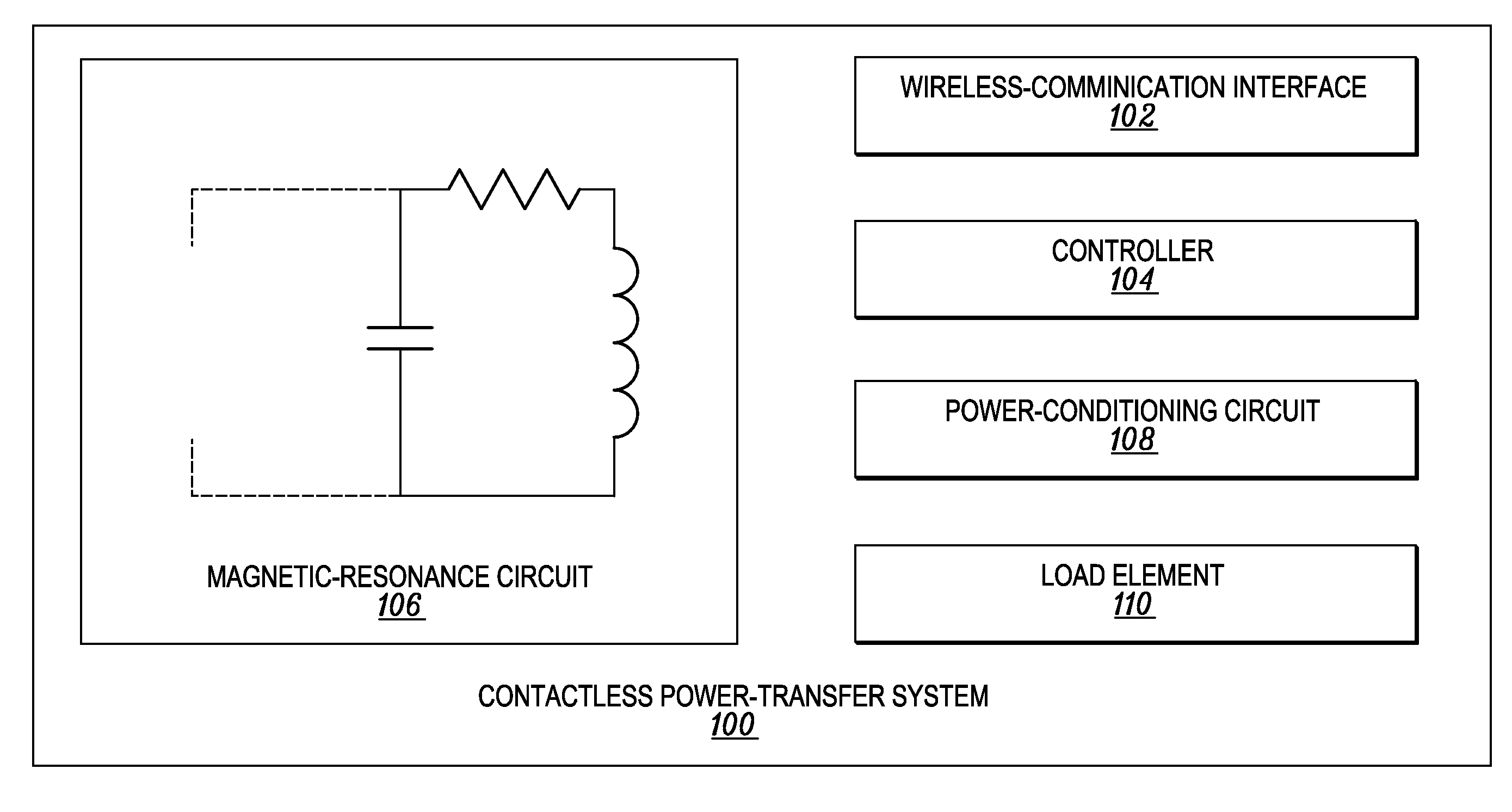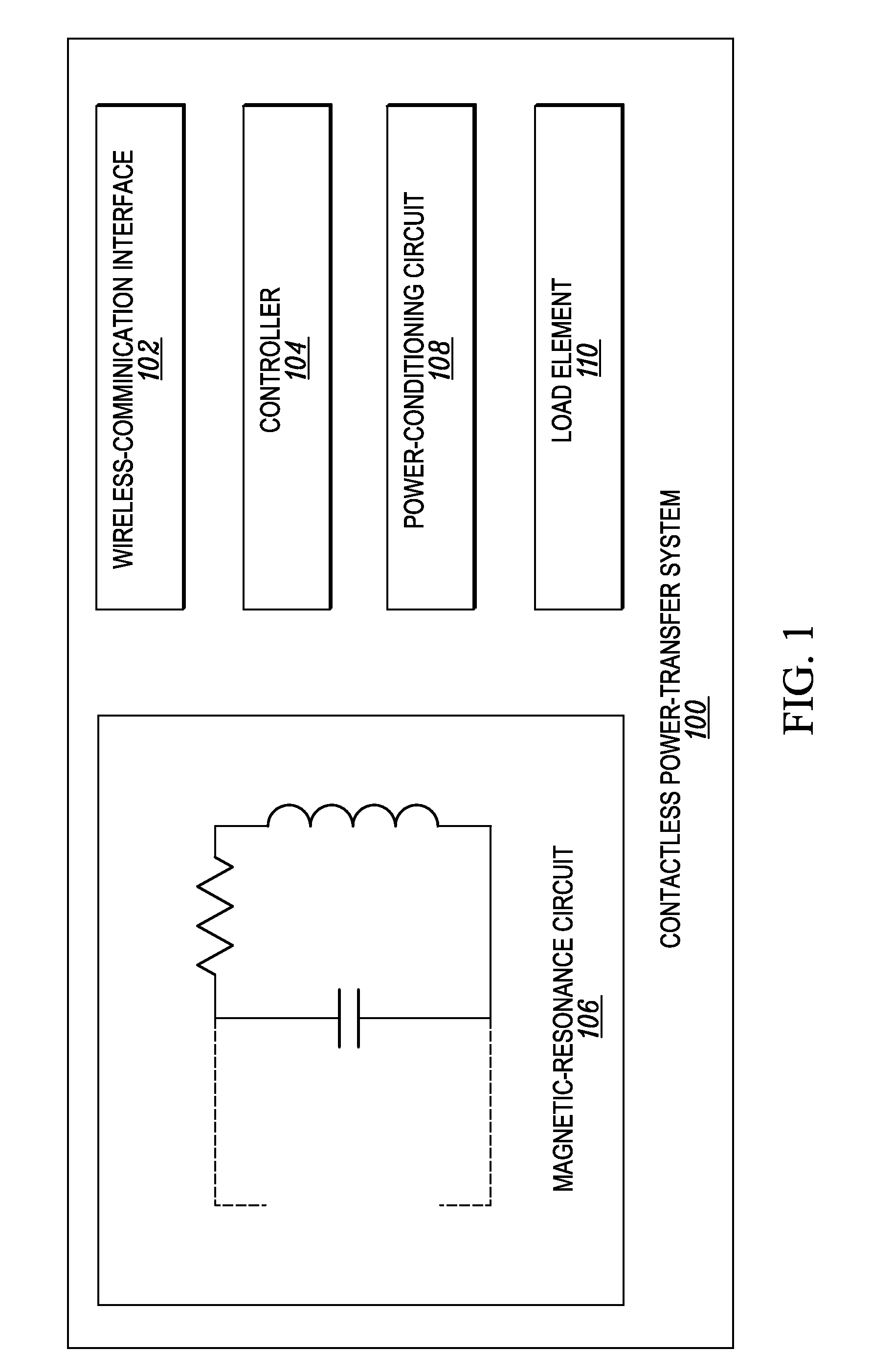Methods and systems for contactless battery discharging
a technology of contactless battery and discharging system, which is applied in the direction of charging/discharging, electric power transfer ac network, transportation and packaging, etc., can solve the problems of limiting affecting the reliability of battery power levels, and affecting the mobility of rechargeable batteries for extended periods
- Summary
- Abstract
- Description
- Claims
- Application Information
AI Technical Summary
Benefits of technology
Problems solved by technology
Method used
Image
Examples
Embodiment Construction
[0014]Disclosed herein are methods and systems for contactless battery discharge. One embodiment takes the form of a contactless power-transfer system that includes a wireless-communication interface, a controller connected to the wireless-communication interface, a magnetic-resonance circuit, a power-conditioning circuit connected to the magnetic-resonance circuit, and a load element connected to the power-conditioning circuit. The controller is configured to determine that a smart-battery system is in a discharge-needed state and responsively transmit, via the wireless-communication interface, a battery-discharge command instructing the smart-battery system to generate an oscillating magnetic field. The magnetic-resonance circuit is configured to couple with the generated oscillating magnetic field and responsively output a corresponding power signal. The power-conditioning circuit is configured to receive the power signal from the magnetic-resonance circuit, rectify the received ...
PUM
 Login to View More
Login to View More Abstract
Description
Claims
Application Information
 Login to View More
Login to View More - R&D
- Intellectual Property
- Life Sciences
- Materials
- Tech Scout
- Unparalleled Data Quality
- Higher Quality Content
- 60% Fewer Hallucinations
Browse by: Latest US Patents, China's latest patents, Technical Efficacy Thesaurus, Application Domain, Technology Topic, Popular Technical Reports.
© 2025 PatSnap. All rights reserved.Legal|Privacy policy|Modern Slavery Act Transparency Statement|Sitemap|About US| Contact US: help@patsnap.com



